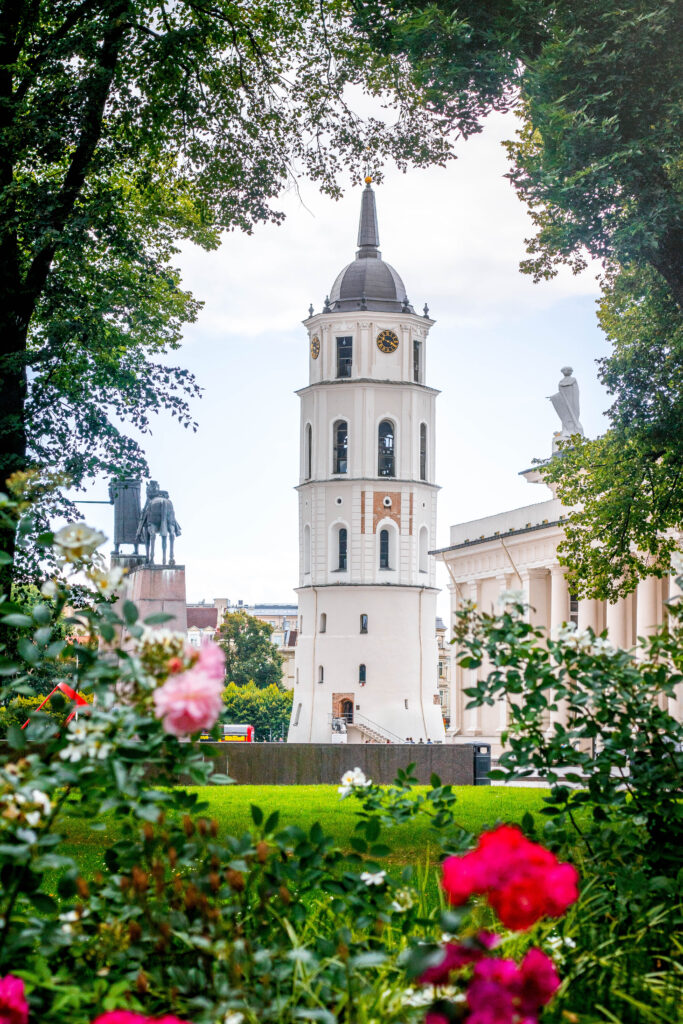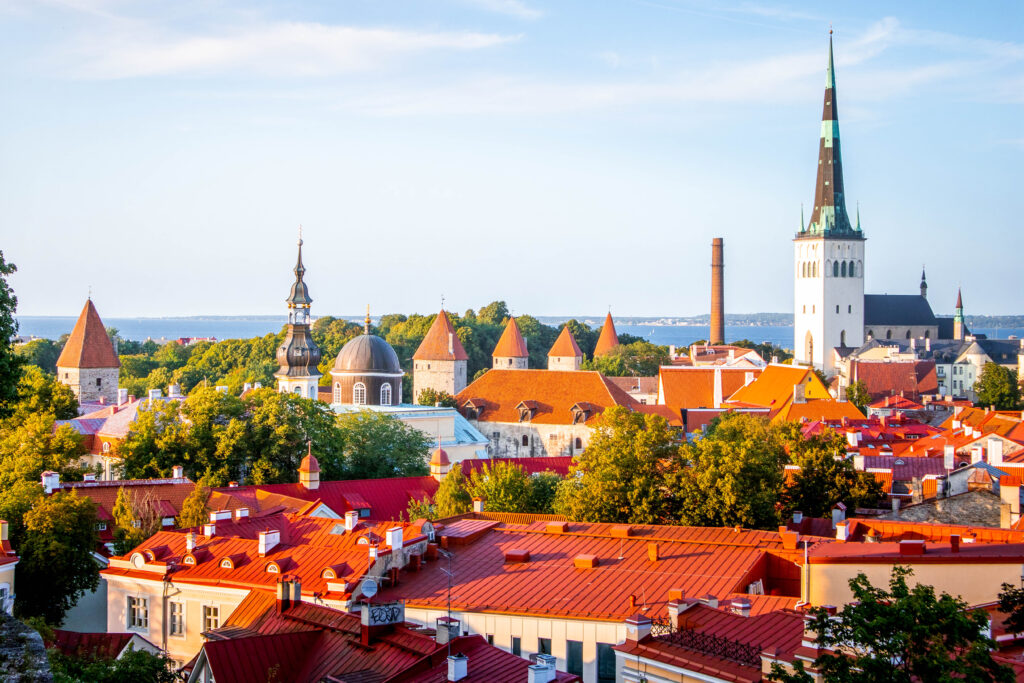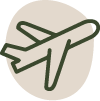VISIT Lithuania
Even though the southernmost Baltic country nation is a bit under-the-radar, it has plenty of cultural, historical and natural sights to visit.
Currency
€ - Euro (1€ ≃ 1,05$ ≃0,86£)
POPULATION
2,8 millions
MAIN LANGUAGE
Lithuanian
AREA
65,300 km²
TIME ZONE
UTC+2 / UTC+3
FLAG
🇱🇹
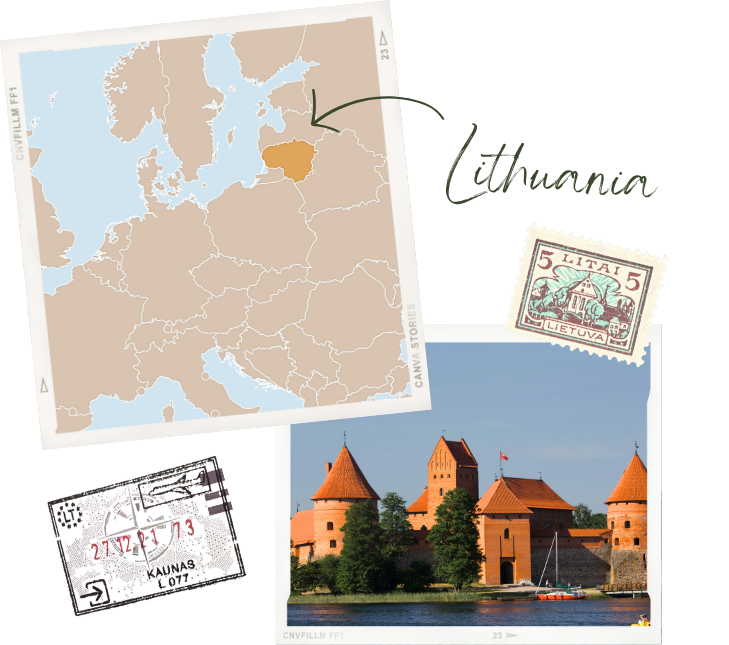

CLIMB THE HILL OF CROSSES
Over 100,000 crosses and religious statues may be seen 12 miles from Siauliai. It's thought that the crosses were first erected there in 1831 by the local Catholics.

VISIT TRAKAI CASTLE
The castle is well-known for its Gothic-style construction and unique setting on an island in one of Lithuania's deepest lakes, Lake Galve.

DO A DAY TRIP TO KAUNAS
Due to its large student population, Kaunas exudes a youthful, modern vibe and is a cultural hub.

EXPLORE VILNIUS
Lithuania's capital city has a rich history, a large old town, vibrant nightlife, a ton of street art, relaxed cafes, and a remarkable diversity of architecture to be seen.

STROLL IN THE REPUBLIC OF UZUPIS
A micronation located in the heart of Vilnius, the Republic of Užupis, was founded by the inhabitants in 1998 and is today an artistic haven.
Pick a Lithuanian destination
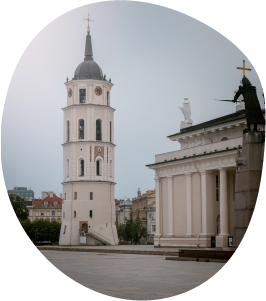
Vilnius
Renowned for its mix of Baroque architecture and medieval heritage

Kaunas
Second Lithuanian city and European Capital of Culture in 2022
Prepare your trip to Lithuania
💡 Why visit Lithuania?
Lithuania enchants visitors with its mix of medieval history, natural beauty, and vibrant culture. From the baroque architecture of Vilnius to charming towns like Trakai and Kaunas, there’s plenty to explore. Must-see highlights include the Hill of Crosses, the fairy-tale Trakai Castle, and Vilnius’ lively Old Town.
🪪 Do I need a visa to visit Lithuania?
Lithuania is part of the Schengen area. Citizens of the EU, USA, Canada, Australia, and many other countries can enter visa-free for up to 90 days within a 180-day period. However, some nationalities do require a visa. It’s best to check with the nearest Lithuanian embassy or consulate for the most up-to-date information specific to your situation.
IMPORTANT NOTE: The information below is provided merely as an indication and applies for short-term tourism visa purposes only. Before your trip to Lithuania, or if you are planning to come to Lithuania for another purpose (work, studies, …), check the official information on the European Commission website’s page about Schengen visa application: https://www.home-affairs.ec.europa.eu/
⏳ Visa-free but limited to maximum 90 days for a period of 180 days if you are a citizen of one of the following countries: Albania; Andorra; Antigua and Barbuda; Argentina; Australia; Austria; Bahamas; Barbados; Belgium; Bosnia and Herzegovina; Brazil; Brunei; Bulgaria; Canada; Chile; Colombia; Costa Rica; Croatia; Czechia; Denmark; Dominica; El Salvador; Estonia; Finland; France; Georgia; Germany; Greece; Grenada; Guatemala; Honduras; Hong Kong; Hungary; Iceland; Israel; Italy; Japan; Kiribati; Kosovo; Latvia; Liechtenstein; Lithuania; Luxembourg; Macau; Malaysia; Malta; Marshall Islands; Mauritius; Mexico; Micronesia; Moldova; Monaco; Montenegro; Netherlands; New-Zealand; Nicaragua; North Macedonia; Norway; Palau; Panama; Paraguay; Peru; Poland; Portugal; Romania; Saint Kitts and Nevis; Saint Lucia; Saint Vincent and the Grenadines; Samoa; San Marino; Serbia; Seychelles; Singapore; Slovakia; Slovenia; Solomon islands; South Korea; Spain; Sweden; Switzerland; Taiwan; Timor-Leste; Tonga; Trinidad and Tobago; Tuvalu; Ukraine; United Arab Emirates; United Kingdom; United States of America; Uruguay; Vatican; Venezuela
🛂 Visa required if you are a citizen of one of the following countries: Afghanistan; Algeria; Angola; Armenia; Azerbaijan; Bahrain; Bangladesh; Belarus; Belize; Benin; Bhutan; Bolivia; Botswana; Burkina Faso; Burundi; Cambodia; Cameroon; Cape Verde; Central African Republic; Chad; China; Comoros; Congo; Congo (Dem. Rep); Cote d’Ivoire (Ivory Coast); Cuba; Djibouti; Dominican Republic; Ecuador; Egypt; Equatorial Guinea; Eritrea; Eswatini; Ethiopia; Fiji; Gabon; Gambia; Ghana; Guinea; Guinea-Bissau; Guyana; Haiti; India; Indonesia; Iran; Iraq; Jamaica; Jordan; Kazakhstan; Kenya; Kuwait; Kyrgyzstan; Laos; Lebanon; Lesotho; Liberia; Libya; Madagascar; Malawi; Maldives; Mali; Mauritania; Mongolia; Morocco; Mozambique; Myanmar; Namibia; Nauru; Nepal; Niger; Nigeria; North Korea; Oman; Pakistan; Palestine; Papua New Guinea; Philippines; Qatar; Russia; Rwanda; Sao Tome and Principe; Saudi Arabia; Senegal; Sierra Leone; Somalia; South Africa; South Sudan; Sri Lanka; Sudan; Suriname; Syria; Tajikistan; Tanzania; Thailand; Togo; Tunisia; Turkey; Turkmenistan; Uganda; Uzbekistan; Vanuatu; Vietnam; Yemen; Zambia; Zimbabwe
⛅ When is the best time to visit Lithuania?
❄️ December – February: Winters are cold and snowy, with temperatures often dropping below -5°C (23°F). Christmas markets and snowy castles create a magical atmosphere, especially in Vilnius and Trakai.
🌱 March – May: Spring brings blooming parks and a revival of outdoor life. Temperatures range from 5°C (41°F) to 18°C (64°F), ideal for strolling through Old Towns or exploring the countryside.
☀️ June – August: Summer is the warmest and most popular season. Temperatures hover between 18°C (64°F) and 28°C (82°F), and daylight can last up to 17 hours. It’s a great time for beaches, national parks, and festivals.
🍂 September – November: Autumn brings colorful forests and crisp air. September is still mild, while November can be chilly and grey. It’s a peaceful time to visit without the crowds.
🚉 How to get around Lithuania?
Getting around Lithuania is straightforward and affordable:
🚌 Buses: Buses connect all major towns and rural areas. They’re reliable, frequent, and cost-effective. Vilnius, Kaunas, and Klaipėda have local bus systems and long-distance routes.
🚂 Trains: Trains connect key cities like Vilnius, Kaunas, and Klaipėda. They’re generally punctual and scenic, though slower than buses on some routes.
🚗 Car Rental: Renting a car is ideal for exploring the coast, lakes, and national parks. Roads are in good condition. An International Driving Permit (IDP) is recommended if your license isn’t in Latin script.
💳 Can I use bank cards or cash for payments in Lithuania?
Credit and debit cards are widely accepted in Lithuania. Visa and Mastercard are the most common. Euros are the official currency, and cash may be useful in rural areas or small kiosks.
🔌 What type of plugs and voltage does Lithuania use?
Lithuania uses plug types C and F, both with two round pins. The standard voltage is 230V and the frequency is 50Hz.
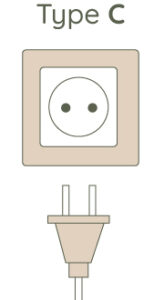
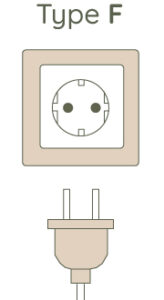
If needed, you can order an universal travel plug adapter here.
🪙 Is tipping customary in Lithuania?
Tipping is not obligatory in Lithuania, but it is appreciated. In restaurants and cafés, a tip of 5-10% is common if service is good.
🥛 Is it safe to drink tap water in Lithuania?
Tap water is safe to drink throughout Lithuania.
📅 When are public holidays and store closing days in Lithuania?
In Lithuania, most stores are open on Sundays, though with reduced hours. There are 10 national public holidays in Lithuania:
- New Year’s Day (January 01)
- Restoration of the State (February 16)
- Independence Restoration Day (March 11)
- Easter Sunday and Monday (dates vary)
- Labour Day (May 01)
- Midsummer Day (June 24)
- Statehood Day (July 06)
- Assumption of Mary (August 15)
- Christmas Day (December 25)
- Boxing Day (December 26)
On these days, most businesses and offices will be closed, and many attractions may be shut or have limited opening hours.
🚦 What are the speed limits in Lithuania?
In Lithuania, traffic drives on the right-hand side of the road. The main speed limits are as follows:
- 50 kph / 30 mph in urban areas
- 90 kph / 56 mph on main roads
- 110 mph / 68 kph on dual carriageways
During adverse weather (rain, fog, etc.), the speed limits are lowered.
💬 What are some basic Lithuanian words I should know?
- Hello (informal) = Labas
- Good day = Laba diena
- Goodbye = Viso gero
- Yes = Taip
- No = Ne
- Thank you = Ačiū
- Please = Prašau
- You’re welcome = Nėra už ką
- Excuse me = Atsiprašau
- Day = Diena
- Night = Naktis
- Good evening = Labas vakaras
- Goodnight = Labos nakties
- Mister = Ponas
- Ma’am = Poni
- Street = Gatvė
- Road = Kelias
💡 Tip: With the GoogleTranslate app, you can download the Lithuanian language to use it even offline!
🛡️ Is it safe to travel in Lithuania?
Lithuania is generally very safe for travelers. It has low crime rates and is known for its welcoming atmosphere. As always, take basic precautions:
Secure Your Belongings: Pickpocketing is rare but possible in busy areas or public transport.
Emergency Numbers: Dial 112 for all emergency services in Lithuania.

